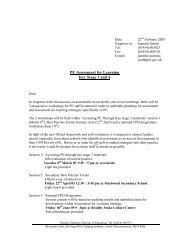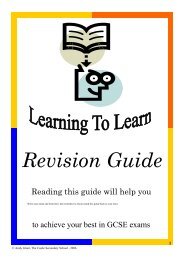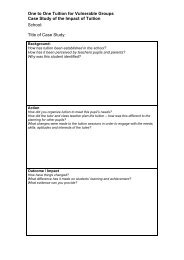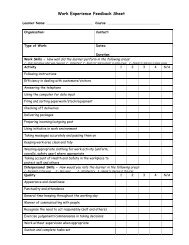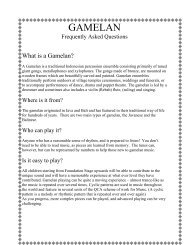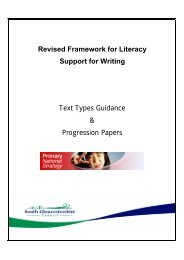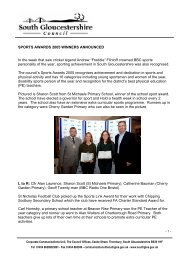Gifted & Talented Pupils
Gifted & Talented Pupils
Gifted & Talented Pupils
You also want an ePaper? Increase the reach of your titles
YUMPU automatically turns print PDFs into web optimized ePapers that Google loves.
Identification of <strong>Gifted</strong><br />
and <strong>Talented</strong> <strong>Pupils</strong><br />
Schools should be able to identify their <strong>Gifted</strong><br />
and <strong>Talented</strong> pupils through the professional<br />
judgment, knowledge and experience of individual<br />
or the collective staff of the school. Identification<br />
should be an agreed, continuous, whole school<br />
process. It should match the school’s definition<br />
of <strong>Gifted</strong> and <strong>Talented</strong> pupils.<br />
Schools should ensure that the identification process is<br />
rigorous, transparent, fair and inclusive. The process<br />
should be flexible in order to meet the needs of pupils<br />
who may join the school part way through a year or key<br />
stage. <strong>Pupils</strong>’ gifts or talents may be recognised at any<br />
time or in any area of school life.<br />
Where possible, schools should work closely with<br />
‘feeder’ schools at all key stages in order to promote<br />
continuity and progression for pupils.<br />
<strong>Gifted</strong> and <strong>Talented</strong> under-achievers are particularly<br />
difficult to identify. Schools should monitor their<br />
arrangements to ensure that they are not simply<br />
identifying those who are already high achievers.<br />
The identification process will need to take into<br />
account factors such as motivation, personality and<br />
home background. These factors are significant in<br />
converting potential into performance.<br />
There are many checklists available for teachers to<br />
use when identifying <strong>Gifted</strong> and <strong>Talented</strong> pupils. A<br />
general checklist may be a starting point for a school,<br />
but this should be supplemented by subject-specific<br />
lists of identifiers, especially in Key Stages 3, 4 and<br />
at post-16. Examples of typical identifiers can be found<br />
in Appendix 2 of this document.<br />
The main methods of identification are:<br />
● testing, formally or informally<br />
● tracking<br />
● nomination by teachers, parents and peers<br />
● providing pupils with the opportunities in which<br />
to succeed, from which it should become clear<br />
if pupils have, or have not, notable ability.<br />
The LEA will carry out an audit in order to<br />
facilitate sharing of good practice, to identify <strong>Gifted</strong><br />
and <strong>Talented</strong> pupils.<br />
The school’s own definitions of <strong>Gifted</strong> and<br />
<strong>Talented</strong> pupils and main methods of identification<br />
should be included in the school’s agreed policy<br />
and guidance documents. In addition, the policy or<br />
guidelines should state how the identification<br />
process is to be managed, who will be involved<br />
and when and how it is to take place.<br />
Schools will also need to consider to what extent the<br />
outcomes will be publicised within the school and how<br />
decisions will be explained and justified to parents.<br />
6



